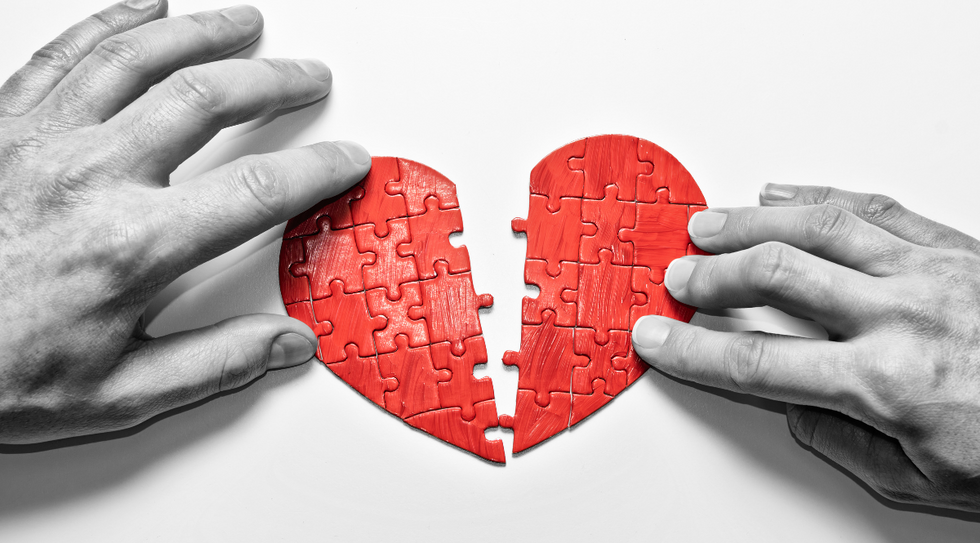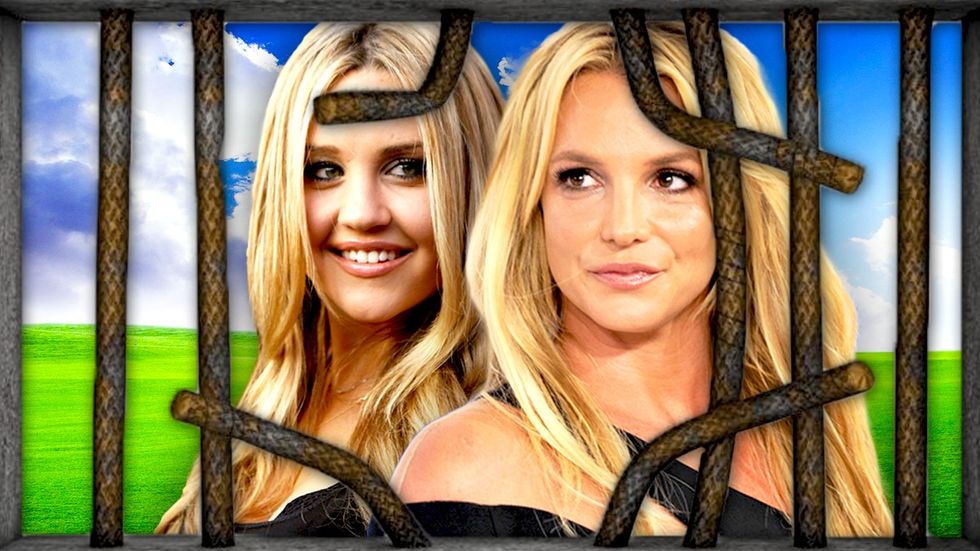Anxious Attachment Style: How to Heal Insecurities For Greater Emotional Intimacy
Love isn’t easy, despite cultural messages about meeting “the one” and living happily ever after. It takes work, not only in communication and mutual understanding but to confront your deepest wounds. The more you open yourself to vulnerability and intimacy, the more you will face the anxieties and fears that have accumulated over the years. The more you become attached, the more courage you’ll need.RELATED: Avoidant Attachment Style: How to Identify and Overcome A Fear of IntimacyThe mechanism of love, and how it resurfaces old wounds, is best captured by John Bowlby’s attachment theory, which was introduced in the 1950s, but has now become widely recognized. Bowlby theorized that our early interpersonal relationship with our caregivers, the attachments made as an infant where we relied on others to keep us alive, ends up shaping our adult relationships.Within attachment theory, there are four main styles: anxious attachment, avoidant attachment, fearful avoidant, and secure attachment. This article will zoom in on anxious attachment, which, as the name implies, is identified by significant amounts of anxiety when forming relationships. With 20 percent of the population thought to have an anxious attachment style, there’s a chance this relates to you.What Is Anxious Attachment?The terms given to each attachment style give some indication of what they describe. People with secure styles typically develop healthy relationships. People with an avoidant attachment style often create emotional distance through fear of being rejected or not having their needs met. This isn’t always clear with the avoidant attachment style, however, and these people tend to appear aloof or unaffected.People with anxious attachment are afraid of losing the love they have, or fear their love won’t be reciprocated. That can manifest as clinginess or neediness — they hold onto the person they love (think of the image of a child hugging a parent’s leg as they go to leave the house). Bowlby noted a distinction with the anxious attachment style; anxiety in these people often manifests as anger or jealousy. In A Secure Base, he writes:“We take it for granted that, when a relationship to a special loved person is endangered, we are not only anxious but are usually angry as well. As responses to the risk of loss, anxiety and anger go hand in hand. It is not for nothing that they have the same etymological root.”John BowlbyThese aren’t hard and fast rules. Some people oscillate between different manifestations or insecurities, depending on the relationship, and the situation. However, similar to personality types, these describe a person’s tendencies based on early childhood experiences. In this sense, Bowlby offered a different approach to child development in contrast to Sigmund Freud.What Triggers Anxious Attachment?The biggest identifiable cause of anxious attachment is inconsistency in a caregiver. The unpredictability creates uncertainty in the child, not knowing whether their needs will be met, or neglected. This contrasts with the avoidant attachment style, where rather than inconsistency, their needs were infrequently met, leading to a sense of learned helplessness and hyper-independence.RELATED: How Can You Apply Erik Erikson’s Stages of Development?Other causes of anxious attachment include an anxious parent, which makes sense, as behaviors are passed on and internalized by the child, through an inherited worldview or perspective. Equally, parents who look to their children to fulfill their own personal needs can create an anxious attachment. In these situations, parents are placing their needs ahead of the child's, often unconsciously. Various behaviors point to anxious attachment in children. The most obvious is distress when separated from parents, discomfort being looked after by strangers, aggression, and not easily soothing after being upset. Being able to spot this early can support the child's development, not allowing these tendencies to take a strong hold into adult life.How Anxious Attachment Affects Adult RelationshipsPeople with anxious attachment had to be alert as children to when their needs would be met. As a result, they can grow up to be hyper-vigilant of cues that their needs won’t be met in adult life. The increased sensitivity causes overreactivity to signs of rejection or abandonment, along with paranoia about people’s intentions. If a parent placing their needs above the child has a big influence, these children may grow up to become people pleasers, prioritizing other people’s needs ahead of their own.RELATED: Friends and Benefits: Everything You Need to Know About Platonic LovePeople with an anxious attachment style tend to have low self-esteem, whilst pedestalling others. This imbalance creates a sense of inferiority, often the anxious person places self-worth outside of themselves, seeking validation from others, mirroring early childhood experiences. In contrast, some attachment styles come with a low opinion of others, which contributes to a sense of avoidance.To move this from the theoretical to the practical, people that have anxious attachment will struggle to balance their needs with their partners. If you align with this style, you may feel afraid of losing your partner, feel highly attuned to their needs, but also sensitive to rejection. If things go wrong, you’ll like to personalize them and see them as a personal failing, even if the conflict or fallout is normal or something both people are responsible for.How to Heal an Anxious Attachment StyleIf you’re committed to personal growth and overcoming limitations, then identifying your attachment style is a huge catalyst for healing. Remember, it’s not a life sentence, but a way to detect conditioning, and heal effectively. It’s also an opportunity for self-compassion; Bowlby’s model shows how many of our adult tendencies were developed at a time of innocence and vulnerability.The good news is that attachment styles can be overcome and transformed into secure attachments. There’s no on-and-off switch, though, it’s a long process that will take patience, courage, and resilience. With that in mind, below are some steps to start the healing process, separated into personal and relational work.1. Confront Your WoundsOne of the tenets of growth is summarized by Carl Rogers, a pioneer of humanistic psychology: “The curious paradox is that when I accept myself just as I am, then I can change.” You have to be willing to accept your wounds and limitations before they can heal. To use a metaphor, have you ever injured yourself, but only noticed the pain when you looked at the wound? Your awareness didn’t cause the damage, it brought an end to ignorance.In the same way, becoming aware of patterns and defense mechanisms is a way to change, but it will hurt in the short run. This has to be done with as much self-compassion as possible, not judgment or shame, although if those emotions surface, they are welcome. The aim is to get a clear picture of where you’re at, and then get to work. At this stage, the support of a therapist would be beneficial, but if that’s not possible, do your best to rely on your social network.2. Practice Emotional RegulationAttachment styles, imprinted in childhood, influence your present to the extent to which you respond to those wounds. Many trauma-informed experts note how, in moments where you become triggered, old patterns of behavior come online. In those moments, your emotional life acts at the level of the inner child, frozen at the time of its original source of pain. In the words of Gabor Maté:“What we want and demand from the world needs to conform to our present needs, not to unconscious, unsatisfied needs from childhood. If distinctions between past and present blur, we will perceive loss or the threat of loss where none exists; and the awareness of those genuine needs that do require satisfaction, rather than their repression for the sake of gaining the acceptance or approval of others.”Gabor MatéEmotional regulation requires the awareness to spot those attachment triggers, to soothe them, confront them, and accept them, without operating at their demand. That means developing the skill to be with strong emotions such as jealousy, anger, and sadness, and allowing them to move through. In addition, you’ll be able to experience them whilst retaining emotional closeness to your partner.3. Get Clear On Your NeedsThe blur of past and present is something that has to be overcome in order to get a clear idea of what your adult needs are. When operating from attachment wounds, people tend to fall back on old mechanisms. The avoidant will withdraw completely, the anxious will become hyper-vigilant and fearful. Whilst there’s always room for insecurity — it’s part of being vulnerable — a more mature medium has to be found.To counter excessive neediness, as an anxiously attached person, it pays to look for ways to cultivate more emotional independence. Where can you meet your own needs? In addition, once you identify reasonable needs, you have to be able to communicate them with your partner.When it comes to communication, there’s a balance between communicating the ideal and communicating the process. By this, I mean that you may need a meta-level of communication to acknowledge, “hey, I’m working on some attachment wounds at the moment, and I need support as I grow and evolve,” rather than communicating from the place you would like to be at.4. Shift Your Relationship From Fear to GrowthThis step naturally requires the willingness and cooperation of a partner. Much of the work can be done alone, as you work on identifying wounds and emotional regulation. But the raw, messy work is done in the moment when faced with interpersonal conflict, unmet needs, or the challenge of communicating when feeling upset or triggered. This naturally calls for a different dynamic in your relationship, from fear to growth.In this sense, fear is an indicator of what opportunities there are to learn and grow — together. By starting an open and honest dialogue, your healing journey can become part of a co-adventure with your partner. Ideally, your partner will be doing their inner work, too, and the two of you will strive to communicate through any difficulties that arise.Forgetting the myth of easy, when you see a relationship as an opportunity to grow beyond the limitations of old patterns, it will paradoxically bring you closer together. To be able to boldly say, “I am afraid of losing you,” whilst choosing not to spiral or project your anger or insecurities on your partner, is all part of a trust-building exercise. The more you face your fear, and come through the other side, the more you will develop the self-esteem to know you can navigate the highs and lows of love, without losing yourself along the way.KEEP READING How Your Attachment Style Affects Your Relationship





























